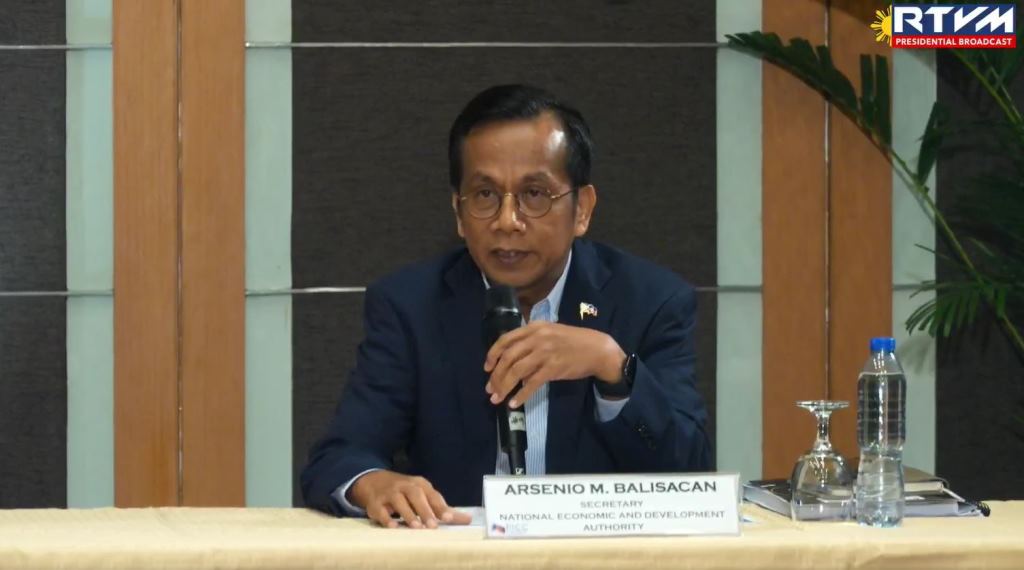To adapt to global trends and emerging challenges, the Department of Economy, Planning, and Development (DEPDev) is set to release the Midterm Update of the Philippine Development Plan 2023-2028 by the end of this month.
DepDEV Secretary Arsenio Balisacan said this as the government is recalibrating its strategies to address challenges.
The updated Plan will outline strategies to overcome persistent implementation bottlenecks, respond to emerging global megatrends, and accelerate progress toward achieving the country’s development goals.
Following the State of the Nation Address (SONA) of President Ferdinand R. Marcos Jr., Secretary Balisacan emphasized that while the country’s economic gains reflect the fruits of deliberate reforms and whole-of-government efforts in the first half of the Marcos administration, more work remains to be done to attain the targets outlined in the Philippine Development Plan (PDP) 2023-2028.
“As the President rightly pointed out, improvements in our statistical measures mean little if they do not translate into better lives for the ordinary Filipino. We’ve made meaningful progress, but we cannot afford complacency. The second half of the administration is crucial in addressing persistent challenges and accelerating public service delivery, especially in areas that matter most to our people: education, health and wellness, food security and agriculture, as well as basic services such as transportation, energy, water, and digital connectivity,” said Balisacan.
Despite various global and domestic headwinds, the country’s development outcomes have improved, while its macroeconomic fundamentals remain sound.
Gross domestic product (GDP) growth, which averaged 5.7 percent in 2024 and 5.5 percent in 2023, was accompanied by a reduction in poverty incidence—which fell from 18.1 percent in 2021 to 15.5 percent in 2023. Encouragingly, income growth was faster among the poorer half of the population, signaling inclusivity of growth. Unemployment declined below pre-pandemic levels, while underemployment steadily improved throughout 2023 and 2024.
Meanwhile, inflation has slowed down; in particular, food inflation fell significantly—from 11.2 percent in January 2023 to just 0.1 percent in June 2025. Fiscal indicators also remain at manageable levels owing to the government’s fiscal consolidation efforts and improved tax administration.
While recognizing these achievements, Balisacan underscored that true progress is measured by every Filipino’s ability to afford basic necessities and access quality employment. To achieve this, he called for sustained and transformative investments in modernizing the country’s food systems and labor markets, strengthening resilience to shocks, and eliminating barriers to productivity and innovation.
“As we continue to make progress and reach greater development milestones, we must focus on the most impactful interventions: modernizing agriculture, upskilling our workforce, improving productivity, and enabling innovation across sectors through forward-looking policy reforms, stronger collaboration, and strategic alignment at various levels of governance. These are the building blocks of a resilient and dynamic economy, where growth leads to tangible improvements in people’s lives,” he said.
He also highlighted the importance of supporting workers and households, particularly those vulnerable to climate risks, global headwinds, and price volatility. This includes continuing targeted assistance to ease cost-of-living pressures and protect the most affected sectors. To strengthen food security, the government has implemented concrete measures to boost production, stabilize supply, and keep food prices affordable.
Among these is the Benteng Bigas Meron Na program, launched this year, which offers affordable milled rice to vulnerable groups through KADIWA centers. The program is currently active in select areas in Luzon and the Visayas, with expansion planned across more provinces in the Visayas and Mindanao.
Efforts to boost agricultural productivity in the medium term are also underway. Over 37,000 farm machines have been distributed to 7,338 farmer groups, while 12,445 units of machinery and equipment have been supplied to 6,869 cooperatives and associations, resulting in a PHP2 per kilo reduction in the cost of palay.
As of May 2025, 109 out of 151 targeted Rice Processing System facilities have been established, with 101 already operational.
These initiatives are complemented by investments in farm-to-market roads, extended fish import permits to augment domestic supplies, and closer coordination between the Department of Agriculture and the Food and Drug Administration to ensure the availability of safe and effective vaccines to address African Swine Fever and Avian Influenza. Together, these measures aim to reinforce and create resilient food supply chains, reduce price volatility, and protect the purchasing power of Filipino households.
“We are committed to building on our momentum and transforming the economy even as we navigate the various challenges that confront us. By doing so, and working alongside every Filipino under a Bagong Pilipinas, we stay on course toward a matatag, maginhawa, at panatag na buhay para sa lahat,” Balisacan added.




